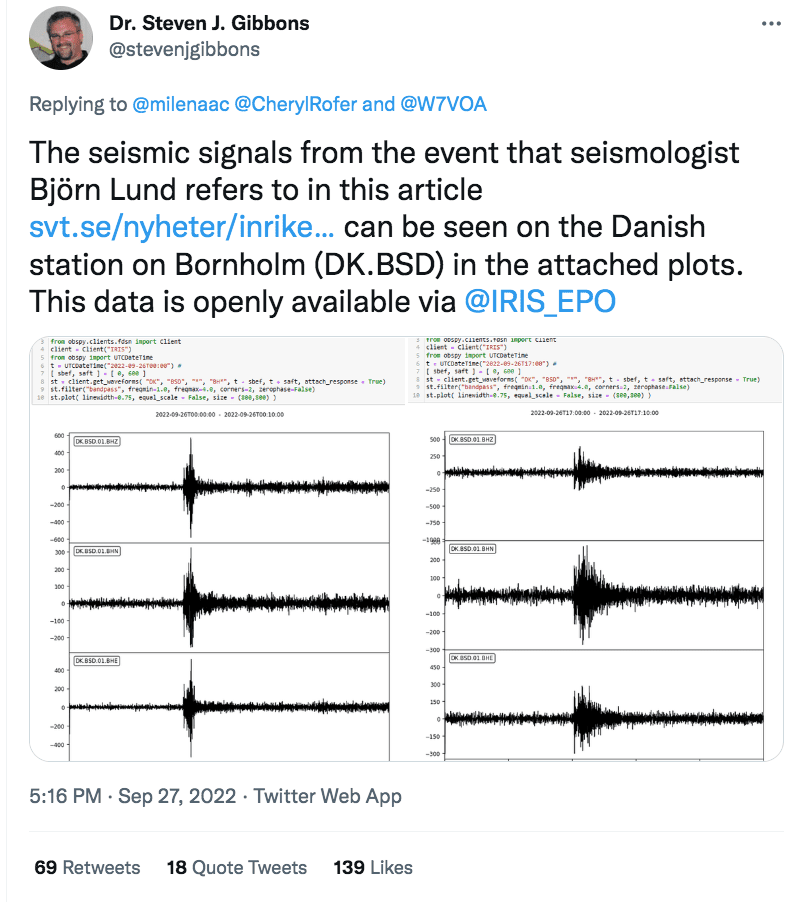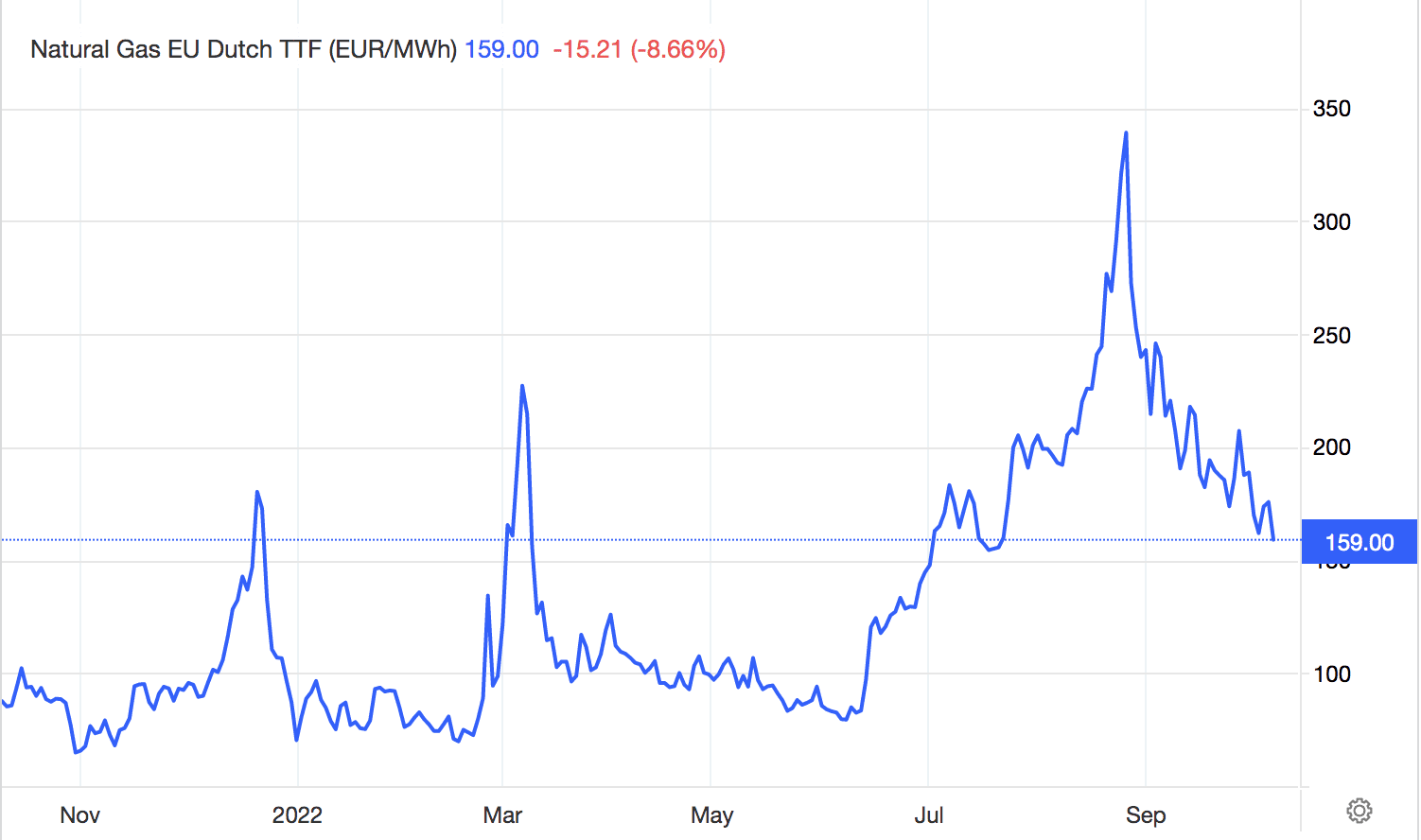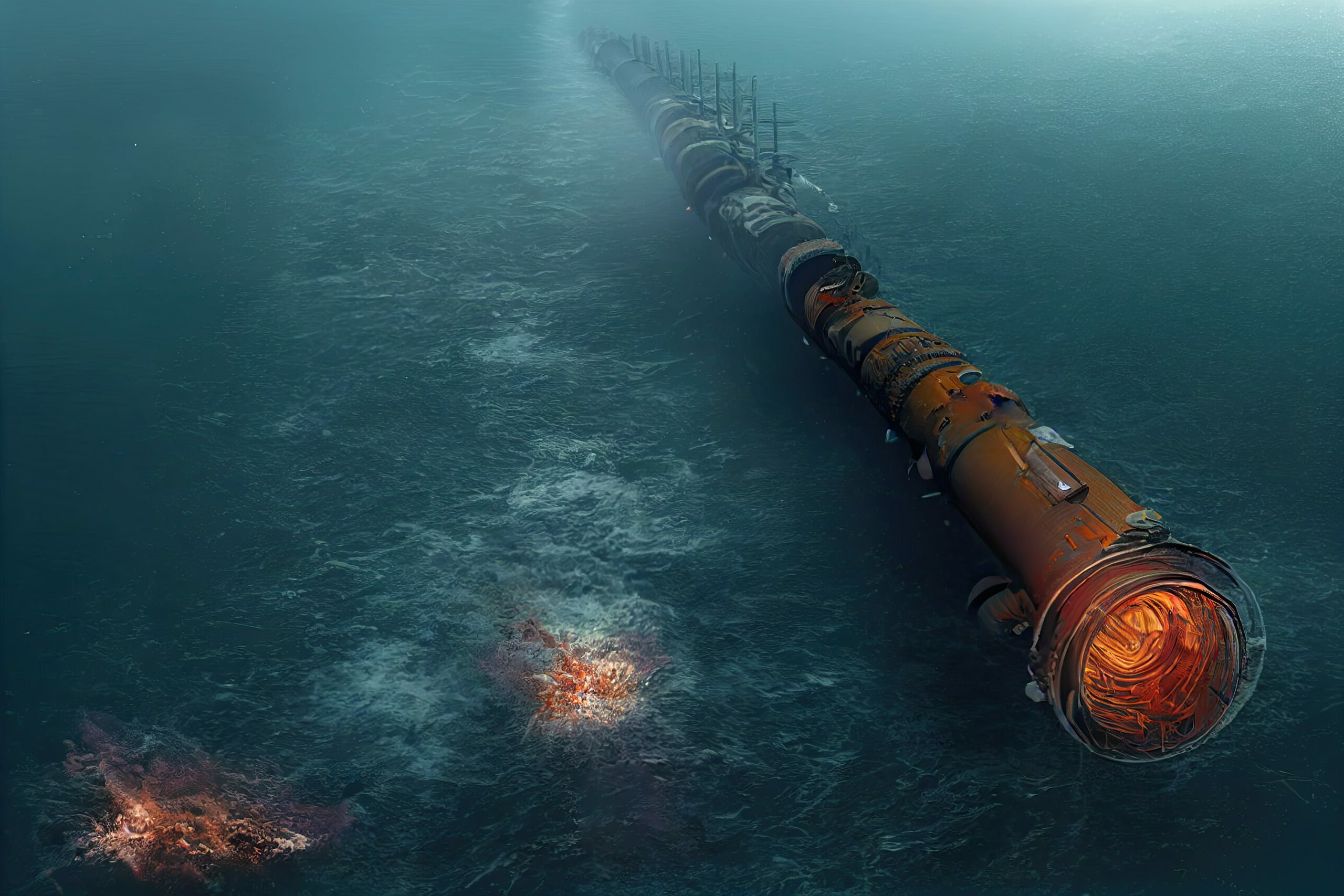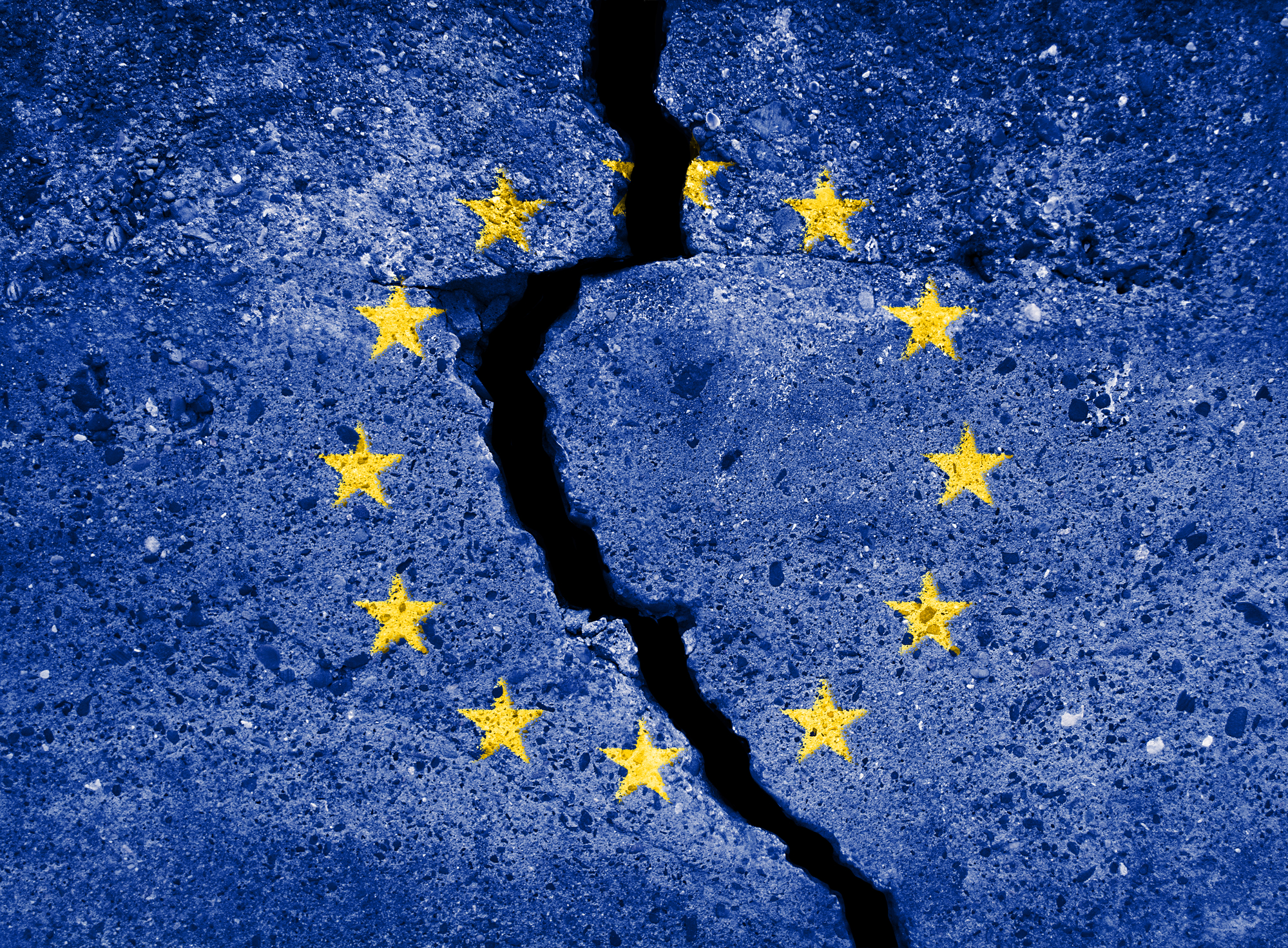Someone just blew up the world’s most significant gas pipeline and Europe’s key energy source: the Nord Stream.
And both the West and Russia agree this is no accident.
Blasts went off in four different places within 24 hours and caused seismic waves equivalent to a thousand pounds of TNT:

Sweden’s preliminary investigation concluded these detonations were man-made.
“We can conclude that there have been detonations at Nord Stream 1 and 2 in the Swedish exclusive economic zone that have led to extensive damage to the gas pipelines,” said investigation leader Mats Ljungqvist.
This attack was carried out in NATO’s closely monitored—and shallow—Baltic waters, which all but confirms this was a well-planned sabotage plotted by a state actor.
There is a lot of finger-pointing and conspiracy theories floating around.
Russians blame the U.S. while Biden blames Putin. And because of its harsh criticism of Germany for its dependence on Nord Stream, Poland is high on the list of suspects.
So, who is the likely culprit?
Nord Stream Implications
You can’t solve a crime if you don’t understand the motives that led to it.
So, why is Nord Stream so important, even beyond the Russia-Ukraine conflict?
As I wrote in “The Hyperinflation Warning,” Europe generates much of its energy from natural gas, nearly half of which comes through Nord Stream pipes.
Heck, three block members even get over 90% of their gas from Russia!
Russia took advantage of that and used Nord Stream as one of the few leverages it has left against the West.
Since June, Russia has been tapering its gas flows to Europe. And a few weeks ago, it shut down Nord Stream completely, threatening to keep the valves closed as long as the West keeps its sanctions.
The EU didn’t give in to the blackmail and rushed to build reserves before the winter. Of course, they knew if they ran out, they had back-up: ease sanctions and keep pumping Russian gas.
But that’s off the table now.
Both Gazprom pipelines—Nord Stream 1 (in service since 2011) and Nord Stream 2 (completed in 2021 but suspended due to the war)—have blown up. And it’s unclear when they can be fixed – if at all.
For starters, patching up fractures and pulling water out of pipelines at 70-meter depth is no easy feat.
Via Bloomberg:
“Repair works at approximately 70 meters water depth will be “a technical challenge”, said Gerald Linke, chairman at Germany’s gas and water association DVGW. Works are carried out in submersible diving bells that are lowered over the pipeline.
Water may enter the pipeline, depending on the size of the leak and the topography of the pipeline, Linke said. To take water out, overpressure needs to be applied or water could be forced back by so-called pigs, an equipment with a special pushing device. Pigs are also used to tightly close the two pipeline strings to the left and right of the damaged site.”
Meanwhile, Germany’s authorities are painting an even grimmer scenario. They speculate Nord Stream pipelines are beyond repair because the seawater in the pipelines may corrode them over time.
“German security authorities are assuming that the three tubes of the Baltic Sea pipeline Nord Stream 1 and 2 will be forever useless after alleged acts of sabotage.
If they are not repaired quickly, a lot of salt water will run in and corrode the pipelines, the Tagesspiegel learned from government circles.”
Even if things aren’t as bad as the Germans suggest, industry sources say that the repair will be a long process, and Nord Stream may not come back to service until next winter.
Via Energy Intelligence:
“I think it’s too early to say that it is absolutely beyond repair,” the source said. “I think that we have to expect the pipe to be, in any case, out of action through the winter.”
Any number of factors could play into the length of time it would take to repair the damage and the cost required to bring the line back into service. “The greater the length of pipe you have to bring up and the more work you have to do, the more time it would take,” the source said.
The job would be further complicated by the incursion of seawater into the line.
“Seawater definitely is a problem” as it can corrode and damage portions of the pipeline beyond the initial holes.
Even with a speedy assessment of the damage and response, there is no certainty that Nord Stream would be back online even by the winter of 2023/24: I wouldn’t put my money on it,” the industry source said.”
A History-Defining Moment
Let that sink in for a moment.
Someone planted bombs on pipelines that deliver most of Europe’s energy supplies and damaged them potentially beyond repair. And that someone forced Europe to manage without Russian gas in the foreseeable future.
I can’t stress enough what a history-defining moment this is.
Economics-wise, it marks the biggest twist in global energy since the oil shocks of the 1970s. One could argue that it’s even bigger than the founding of OPEC in the 1960s.
Then there’s the geopolitical element.
Apart from the fact that the sheer act could lead to a direct confrontation between Russia and NATO—or even an internal NATO quarrel— the end of Nord Stream flips European geopolitics on its head.
Cheap gas is basically the source of all political fragmentation over Russia in Europe. A few Balkan allies aside, politicians from Central and Western Europe support Russia not because they’re friends but because they want to keep pumping cheap gas.
A good example is Germany.
Germany has no political interest in supporting Russia. Quite the opposite, it’s in its best interest to keep the EU block intact, which is its #1 export destination.
It also doesn’t have much economic interest in Russia. Last year, Germany exchanged $60 billion in goods with Russia. Of that, $30 billion were Germany’s gas imports. The rest were Germany’s exports. That’s nothing, given that Germany is the world’s third-largest exporter. Every year, it ships out a whopping $2 trillion worth of stuff, and Russia makes up just 1.5% of that.
The only thing that kept Russia and Germany (and many other European economies) together, despite their historical grudges, was gas.
And that is now gone.
Even if Nord Stream is fixable, it will take time. And whether it likes it or not, over that time, Europe will have to wean itself off Russian gas. And by the time Nord Stream is back up, Europe may have already figured out an alternate source.
As I wrote in “Hyperinflation Warning: Europe’s Looming Blackout Could Be Worse Than Covid, Europe is extensively building so-called regasification infrastructure to import liquefied gas using LNG terminals.
And while right now there isn’t time—or enough LNG gas on the market to fill the void this winter—by the following winter, LNG can become a significant source of European natural gas.
So, for Russia, either scenario seems like shooting itself in the foot. Yet, the mainstream media keeps saying that it’s Russia’s job. It doesn’t make any sense.
Or does it?
Could it be Russia?
Why would Russia blow up one of the most significant parts of its energy infrastructure and the biggest stream of energy exports? One that took 16 years to build and cost tens of billions of dollars?
Especially when it can simply close the valves?
Actually, there is one potential reason.
Remember the price controls in Europe we discussed in “Think Inflation is Over? Think Again.”? Last month, major European economies passed a combined fiscal package of $375 billion to subsidize energy bills and put a cap on wholesale prices.
In the long run, Europe is just postponing the inevitable rise in gas prices. However, for now, it removes some of Putin’s desperately needed leverage against Europe.
Take a look at benchmark European gas prices:

Despite the fact that Gazprom shut its gas and Europe’s central energy artery is damaged (potentially) beyond repair, natural gas prices in Europe have actually dropped.
Which all but defeats the purpose of Putin’s energy blackmail.
Add in major Russian capitulations in Eastern Ukraine, and you can bet Russian oligarchs are on edge. If Putin loses this war, there will be consequences – consequences the elite has to hedge in advance.
One of the scenarios, which at the moment is unlikely, is a regime change:
- Putin is overthrown.
- Russia’s elite put someone new in power.
- They use Putin as a scapegoat to make up with the West.
In that scenario, Russia would have to pay reparations to Ukraine. It’s not a big deal for the elite because such payments would likely come out of national reserves and, in effect, be paid by ordinary people and businesses.
That’s not the case with Nord Stream.
Nord Stream belongs to Gazprom. While it’s majority owned by the state, it’s infested with Russia’s crème de la crème elite. And Putin’s gas embargo forced them to breach many contracts, leaving oligarchs on the hook for hefty penalties.
So if the Russian oligarchy has to restore economic ties with Europe, they’ll have to honor these breaches. But if there’s a clear “force majeure,” the elite might legally dodge them.
In other words, the Nord Stream blow-up could be one of the Russian elite’s contingency plans. Is it a coincidence that all gas disruptions since April have been blamed on “maintenance”?
Maybe, maybe not.
No matter the culprit, Putin will not go down without a fight.
And that is a scary thought.
To be continued next week…
Seek the truth and be prepared,
Carlisle Kane













The only country that benefits financially from blowing up the Nord stream is the US. Is it coincidence that a US navy aircraft “flew by” within minutes of the explosion. Biden publicly admitted it was their ( US) plan to stop Nord Stream. There is no other logical explanation for who is responsible.
There were also Russian ships seen in the area.
Nome of that prove anything.
It’s a busy shipping lane.
This sure looks like Putin’s Nuclear Bomb!
Remember the twin towers…
Look at the aftermath.
Now look at Nord Stream….
https://youtu.be/FVbEoZXhCrM
Its clear who did it
Blowing up Nord stream would definitely weaken Putin’s position & blackmailing tactics in Europe. Without that ace up his sleeve means less funding for his war efforts & perhaps forcing his hand on his next move. The Baltic Sea is heavily monitored by NATO forces, so Biden had the opportunity & motive to put the issue to bed & expediting a ninth inning conclusion.
The article is well-written and thought-provoking but it shows bias favouring the West. It is the West who blackmailed Russia with sanctions and violated a treaty relating to Ukraine as the US fostered regime change in Kyiv to install a puppet regime. Russia did not want conflict. Ukraine has been terrorizing its Russian-speaking citizens in the Dombass region since the treaty and trying to be part of NATO. Did America let Russia set up missiles in Cuba?
Who Dunnit -The Great Nord Stream Mystery
Soon after explosions shattered Russia’s Nord Stream pipeline, a former Polish Defense Minister, Radek Sikorski hailed the news saying “Thank You, USA.” Whether or not Sikorski had evidence of U.S. involvement,
the Who-Dunnit question remains open:, but as the following facts and considerations suggest, the case for U.S. culpability is not easy to dismiss:
1) In a press conference last February, President Biden declared that, if Russia invaded the Ukraine, we’d close down their gas pipelines to the West, by one means or other Soon afterwards, U.S. Foreign Secretary Noland repeated the President’s avowal.
2) Reportedly, days before the explosions, German officials were informed that some action against Nord Stream was impending.
3) Naval forces of the U.S., UK and their partners controlled the entire black sea area in which the explosions took place, and were conducting exercises, including under water operations, near the time and place of the attack.
4). U.S. officials were becoming apprehensive that public protests in Western Europe against energy shortages, especially in Germany, could lead to removal of sanctions freeing up the gas flow from Russia and greatly boosting that country’s earnings. Sabotaging the pipelines ended that possibility.
5) Closing off Russian gas also assured a very large market for U.S. LNG with high prices and profits to our country’s suppliers.
Whether or not the U.S. was responsible, we know that the attack on civilian infrastructure is an act of war, outlawed by international agreement. And it threatens to broaden the Ukraine war into one between U.S./NATO and Russia, or even into the frightening terrain of WWIII.
Detonations don’t only happen outside the pipes. https://www.youtube.com/watch?v=VOTmDabX9JQ